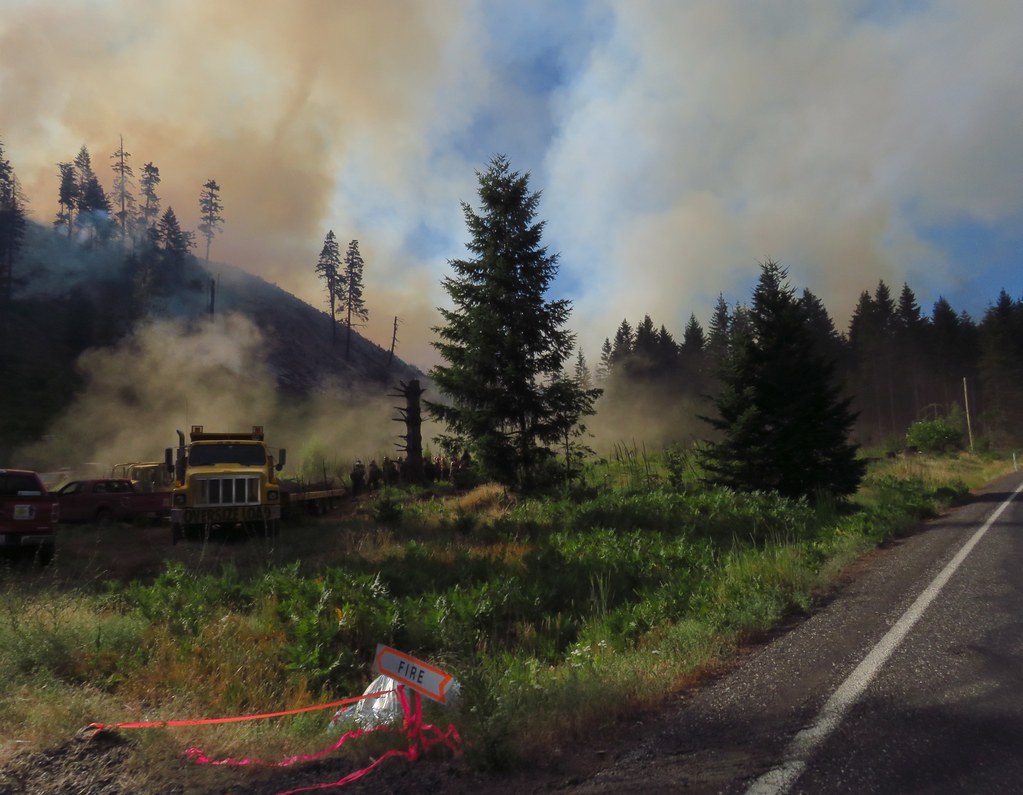The Dry Creek Road Fire has become a significant event in recent history, capturing the attention of local communities and environmentalists alike. As wildfires continue to threaten various regions, understanding the circumstances surrounding the Dry Creek Road Fire is crucial in preventing similar incidents in the future. This article aims to delve into the origins, effects, and recovery efforts associated with this devastating fire.
Wildfires are not just natural disasters; they impact wildlife, air quality, and the overall ecosystem. The Dry Creek Road Fire, in particular, has raised questions about fire management practices and the role of climate change in exacerbating such events. By analyzing the causes of the fire and its implications, we can gain valuable insights into how to safeguard our environment.
As we explore the Dry Creek Road Fire, we will look at the timeline of events, the response from local authorities, and the ongoing recovery efforts. Understanding the intricacies of this fire is essential, not just for those directly affected but also for broader conversations about wildfire preparedness and resilience.
What Caused the Dry Creek Road Fire?
The origins of the Dry Creek Road Fire can be traced back to a combination of factors that created the perfect storm for a wildfire to ignite. Drought conditions, high temperatures, and dry vegetation significantly contributed to the fire's rapid spread. Investigations have indicated that the fire was likely human-caused, with preliminary evidence suggesting that it began near a construction site. This raises questions about safety regulations and preventative measures in fire-prone areas.
How Did the Dry Creek Road Fire Spread?
Once ignited, the Dry Creek Road Fire spread quickly due to strong winds and dry conditions. The terrain played a significant role, with steep hillsides allowing the flames to climb rapidly. Firefighters faced immense challenges as they worked to contain the fire, battling not only the flames but also the unpredictable weather patterns that complicated their efforts. Understanding the mechanics of fire spread is crucial for improving future response tactics.
What Were the Immediate Effects of the Dry Creek Road Fire?
The immediate effects of the Dry Creek Road Fire were devastating. Thousands of acres of land were scorched, homes were lost, and wildlife populations were severely impacted. The air quality deteriorated, affecting residents far beyond the fire's perimeter. Emergency services were stretched thin as they responded to evacuations and provided assistance to those displaced by the flames.
What Were the Long-Term Impacts of the Dry Creek Road Fire?
In the aftermath of the Dry Creek Road Fire, the long-term impacts are still being assessed. The destruction of habitats has led to shifts in local wildlife populations, and the landscape will take years to recover fully. Additionally, the fire has raised awareness about the need for sustainable land management practices to reduce the risk of future wildfires.
How Did Local Authorities Respond to the Dry Creek Road Fire?
Local authorities responded swiftly to the Dry Creek Road Fire, deploying firefighting teams and resources to combat the flames. Evacuations were ordered in high-risk areas, and emergency shelters were set up to accommodate displaced residents. The coordination between local, state, and federal agencies was critical in managing the crisis effectively, showcasing the importance of preparedness in disaster response.
What Recovery Efforts Are Underway After the Dry Creek Road Fire?
Recovery efforts following the Dry Creek Road Fire are multifaceted, focusing on both the restoration of the affected areas and support for displaced residents. Rehabilitation programs include replanting trees, restoring habitats, and repairing infrastructure. Community organizations are also providing mental health support for those affected by the trauma of the fire, highlighting the emotional toll such events can take.
How Can Communities Prepare for Future Fires Like the Dry Creek Road Fire?
Communities can take several steps to prepare for future wildfires, drawing lessons from the Dry Creek Road Fire experience. Some key strategies include:
- Implementing firebreaks and controlled burns to reduce fuel loads.
- Educating residents about fire safety and evacuation plans.
- Developing community response teams for emergency situations.
- Investing in early warning systems to alert residents of imminent threats.
What Role Does Climate Change Play in Wildfires Like the Dry Creek Road Fire?
The increasing frequency and intensity of wildfires, including the Dry Creek Road Fire, can be largely attributed to climate change. Rising temperatures and prolonged droughts create ideal conditions for wildfires to ignite and spread. Understanding the relationship between climate change and wildfires is essential for developing effective mitigation strategies and policies.
Conclusion: Moving Forward After the Dry Creek Road Fire
The Dry Creek Road Fire serves as a stark reminder of the destructive power of wildfires and the importance of community preparedness. By understanding the causes, impacts, and recovery efforts associated with this fire, we can work towards building more resilient communities. Together, we can strive to minimize the risks of future wildfires and protect our environment for generations to come.
You Might Also Like
Unveiling The Dynamic Duo: 50 Cent And Cuban Link TogetherUnveiling The Truth Behind Diane Nguyen's Weight Gain Journey
Discovering The Wonders Of Betty H. Fairfax StudentVue
Bills Rooting Interests Week 15: What Fans Need To Know
Exploring The Mysteries Of ESO Red Petal Bastion
Article Recommendations
- Delores Nowzaradan Age
- Cityscopenews9_0.xml
- Video No Me Pises Pa
- Tiffany Alexander And Serena Mckinney
- Where Is Eilish Holton Now 2022
- Cnn Kaitlan Collins Husband
- David Schwimmer Wife
- The Broadway League
- Leah Schweig
- Usiwo Orezimena Jane


